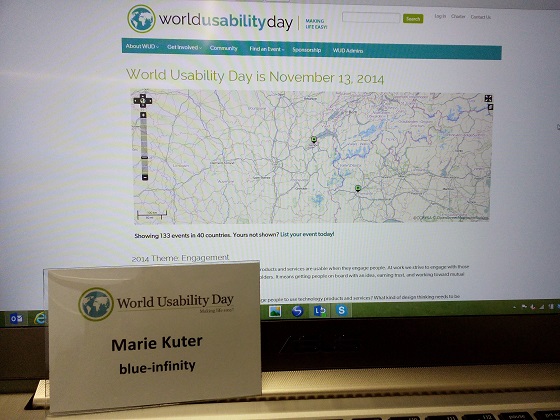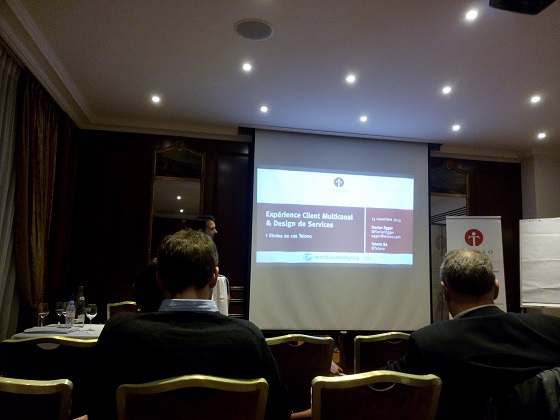Mobile Swiss Expo Geneva: Clio on iPad apps for companies
Last week, I had the chance to be invited to the Mobile Swiss Expo at Palexpo Geneva. Among other conferences gathering [...]

Last Thursday was the World Usability Day: events in 40 countries all over the world happened to promote UX and design thinking. In Geneva, a full-day event was organized by Telono, a well-known local company specialized in UX and user testing. The first part of the day was a training, but I has the chance to be invited to the Afterwork. Nicolas Nova, from Near Future Laboratory, first presented Ethnography and interaction design: how to get to know users to come up with better designs. Then Florian Egger, founder of Telono, presented slides about multi-channel customer experience. Both conferences were very interesting (thank you for that!) and I especially agree with two ideas:
Nicolas Nova explained that most clients see theirs users as YAMs (Young Affluent male), whereas it often ends up being a lot more complex than that. Ethnography is a set of qualitative methods to study users in real-life context. It allows to run a reality-check on client’s conception of their users, come up with concepts and services ideas, identify pain-points and give priorities to actions. One of the interesting methods Nicolas talked about was Participative observation. Sometimes trying the service ourselves can complement a simple observation, by giving us the feeling of using it. I also liked the auto-confrontation idea: filming or taking pictures or users as they are observed, then ask them to comment later. As a recent presentation I did on Needs gathering (a next article will follow), Nicolas concluded that observation must complement declarative data, and that quantitative and qualitative should be studied together to give the best knowledge possible on users.
Florian Egger highlighted that customer experience is not only a website or an application: it includes all contacts a customer can have with a brand, either digital or printed, like notes, ads, phone calls, etc. A woman in the audience explained that having a consistent customer experience is common in Scandinavia, though it is not the case yet in Europe. Then Florian gave a case study and explained that the first way to increase conversion was to remove issues and pain-points, but not only: we have to consider the system we want to improve as part of a bigger experience: study what happens before (eg. how users get to the system) and what happens next (eg. installing and support.)


